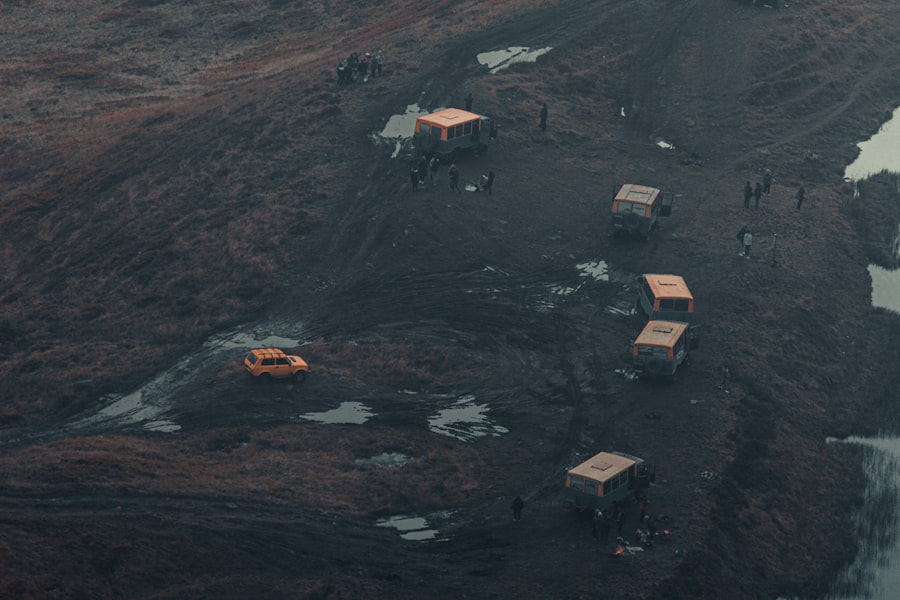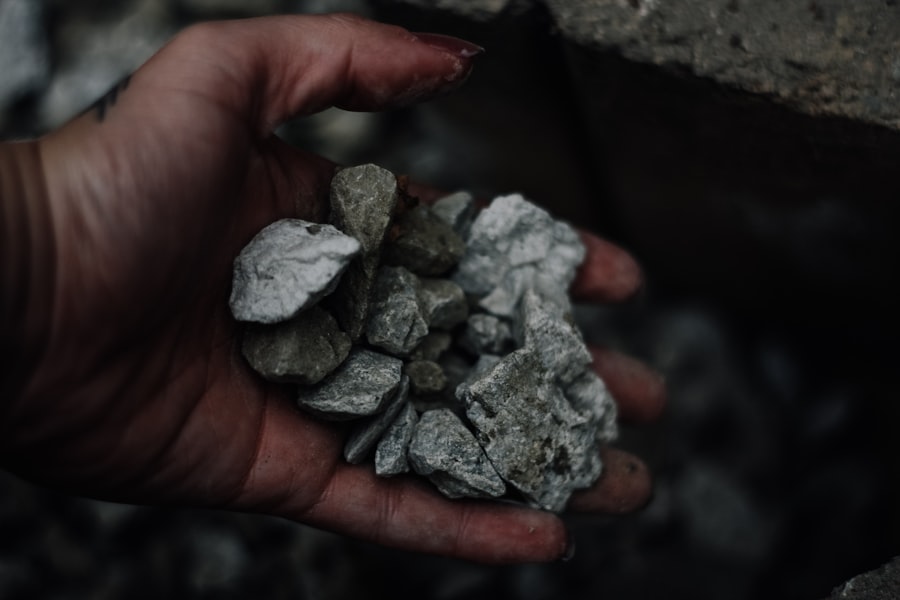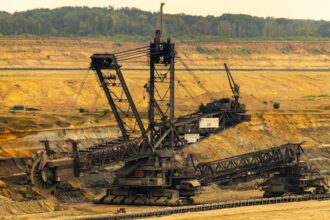The mercenary model has emerged as a significant player in the global landscape of resource extraction, intertwining military services with economic interests. This model involves private military companies (PMCs) that provide armed security and combat services, often in regions rich in natural resources. These companies operate outside the traditional frameworks of national armies, driven by profit motives rather than national allegiance.
As the demand for security in unstable regions grows, so does the reliance on mercenaries to protect valuable assets, leading to a complex interplay between military force and economic gain. The mercenary model raises critical questions about sovereignty, ethics, and the implications of privatizing military functions. As nations grapple with the challenges of securing their resources amidst conflict and instability, the role of PMCs becomes increasingly prominent.
This article delves into the historical context, evolution, and implications of the mercenary model, particularly in relation to resource extraction, while also exploring its environmental and social impacts.
Key Takeaways
- Mercenary companies have historically played a significant role in exploiting natural resources for profit.
- The mercenary model has evolved from simple armed groups to complex organizations involved in resource extraction.
- The use of mercenaries in resource exploitation often leads to severe environmental degradation and social conflicts.
- Ethical concerns and regulatory challenges complicate oversight and accountability of mercenary companies.
- Sustainable and responsible alternatives are necessary to replace the mercenary model for future resource management.
History of Exploiting Resources for Profit
The exploitation of resources for profit is not a new phenomenon; it has deep historical roots that trace back to ancient civilizations. From the extraction of gold and silver by empires to the colonial exploitation of land and labor, the quest for resources has often been accompanied by conflict and violence. The mercenary model can be seen as a modern extension of this historical trend, where private entities engage in resource extraction under the guise of providing security and stability.
Throughout history, various empires have employed mercenaries to expand their territories and secure valuable resources. The Roman Empire, for instance, relied on foreign soldiers to bolster its military might, often in regions rich in minerals and agricultural products. This practice laid the groundwork for future mercenary engagements, where profit-driven motives would increasingly dictate military actions.
As globalization progressed, the dynamics of resource exploitation evolved, leading to the rise of PMCs that operate in a legal gray area, often prioritizing profit over ethical considerations.
The Evolution of Mercenary Companies

The evolution of mercenary companies has been shaped by geopolitical changes and technological advancements. In the late 20th century, the end of the Cold War marked a significant shift in global military dynamics. With many former state armies downsizing or disbanding, a vacuum was created that private military companies quickly filled.
These companies began to offer a range of services, from armed security to logistical support, often in regions where state presence was minimal or non-existent. As conflicts became more privatized, PMCs gained notoriety for their involvement in various military operations around the world. Companies like Blackwater (now known as Academi) and G4S emerged as key players in this arena, providing services to governments and corporations alike.
The evolution of these companies reflects a broader trend towards outsourcing military functions, raising questions about accountability and oversight. The blurred lines between military and corporate interests have led to a complex landscape where profit motives can overshadow ethical considerations.
The Role of Mercenaries in Resource Extraction
| Metric | Description | Example | Impact |
|---|---|---|---|
| Number of Mercenaries Employed | Estimated count of private military contractors hired by resource extraction companies | 5000 (in Congo mining operations) | Increased security but raised human rights concerns |
| Cost of Security Services | Annual expenditure on mercenary services by resource firms | 15 million (USD equivalent) | Significant operational cost impacting profit margins |
| Incidents of Conflict | Number of violent clashes involving mercenaries in resource zones | 23 reported incidents (last 5 years) | Destabilization of local communities and environment |
| Resource Output Stability | Change in resource extraction rates due to mercenary protection | +12% increase in output | Improved production continuity |
| Local Employment Impact | Effect on local workforce due to mercenary presence | -8% local employment in security roles | Reduced job opportunities for locals |
Mercenaries play a crucial role in resource extraction, particularly in conflict-prone regions where state authority is weak or contested. Their presence is often justified as a means of ensuring security for multinational corporations engaged in mining, oil drilling, or logging operations. By providing armed protection, PMCs enable these companies to operate in environments that would otherwise be deemed too dangerous.
However, this reliance on mercenaries raises significant concerns about the implications for local communities and ecosystems. The presence of armed personnel can exacerbate tensions between corporations and local populations, leading to violence and human rights abuses. Moreover, the focus on securing resources can result in environmental degradation as companies prioritize extraction over sustainable practices.
The mercenary model thus creates a paradox where security measures intended to protect resources can ultimately contribute to their exploitation.
Environmental and Social Impacts of the Mercenary Model
The environmental and social impacts of the mercenary model are profound and far-reaching. In many cases, the activities of PMCs are closely linked to environmental degradation, as resource extraction often involves deforestation, pollution, and habitat destruction. The militarization of resource-rich areas can lead to increased violence against indigenous populations and local communities who depend on these ecosystems for their livelihoods.
Socially, the presence of mercenaries can create an atmosphere of fear and repression. Local populations may find themselves caught between corporate interests and armed forces tasked with protecting those interests. This dynamic can lead to human rights violations, including forced displacement and violence against dissenters.
The mercenary model thus perpetuates a cycle of exploitation that not only harms the environment but also undermines social cohesion and stability.
The Ethics of Exploiting Resources for Profit

The ethical implications of exploiting resources for profit through the mercenary model are complex and contentious. On one hand, proponents argue that PMCs provide essential security services that enable economic development in unstable regions. They contend that by protecting investments, these companies contribute to job creation and infrastructure development.
However, critics argue that this perspective overlooks the moral responsibility that comes with resource extraction.
Many local communities are not adequately consulted or compensated for the exploitation of their resources, leading to feelings of disenfranchisement and resentment.
Furthermore, the lack of oversight regarding PMC activities raises questions about accountability for human rights abuses and environmental damage. As such, the ethics of resource exploitation through mercenaries necessitate a critical examination of power dynamics and the responsibilities of corporations operating in vulnerable regions.
Regulatory Challenges and Oversight of Mercenary Companies
Regulating mercenary companies presents significant challenges for governments and international organizations alike. The legal frameworks governing PMCs are often inadequate or inconsistent across jurisdictions, creating loopholes that allow for unregulated activities. In many cases, these companies operate in countries with weak governance structures, making it difficult to enforce accountability measures.
Efforts to establish regulatory frameworks have been met with resistance from both governments and private entities that benefit from the status quo. The lack of comprehensive international laws specifically addressing PMCs further complicates oversight efforts. As a result, instances of misconduct and human rights violations frequently go unpunished, perpetuating a culture of impunity within the industry.
Addressing these regulatory challenges is essential for ensuring that mercenaries operate within ethical boundaries while safeguarding local communities and environments.
Case Studies of Mercenary Companies and Resource Exploitation
Several case studies illustrate the complex relationship between mercenary companies and resource exploitation. One notable example is the involvement of Blackwater in Iraq during the early 2000s. Tasked with protecting U.S. diplomats and contractors, Blackwater’s operations were marred by allegations of excessive force and human rights abuses. The company’s actions not only raised questions about accountability but also highlighted the potential consequences of privatizing military functions in resource-rich regions. Another case study involves the activities of PMCs in Africa’s mining sector. In countries like Sierra Leone and the Democratic Republic of Congo, mercenaries have been employed to secure mining operations amid ongoing conflicts. While these companies claim to provide stability, their presence often exacerbates tensions between local communities and foreign corporations. These case studies underscore the need for greater scrutiny of PMC activities and their implications for both human rights and environmental sustainability.
Alternatives to the Mercenary Model for Resource Extraction
Exploring alternatives to the mercenary model is crucial for promoting responsible resource extraction practices. One potential solution lies in strengthening local governance structures to ensure that communities have a voice in decision-making processes related to resource management. By empowering local populations, governments can foster more equitable partnerships between corporations and communities.
Additionally, investing in sustainable practices can mitigate some of the negative impacts associated with resource extraction. Companies can adopt environmentally friendly technologies and prioritize community engagement to build trust with local populations. Furthermore, international cooperation is essential for establishing regulatory frameworks that hold corporations accountable for their actions while promoting ethical business practices.
The Future of the Mercenary Model and Resource Exploitation
The future of the mercenary model in resource exploitation remains uncertain as global dynamics continue to evolve. As conflicts persist in various regions, the demand for private military services is likely to remain high. However, growing awareness of the ethical implications associated with PMCs may lead to increased pressure for reform within the industry.
Moreover, advancements in technology may reshape how security is provided in resource-rich areas. Innovations such as drones and surveillance systems could reduce reliance on armed personnel while enhancing safety measures for corporations operating in volatile environments. Ultimately, finding a balance between security needs and ethical considerations will be crucial for shaping the future landscape of resource extraction.
The Need for Responsible Resource Management
In conclusion, the mercenary model presents both opportunities and challenges within the realm of resource extraction. While PMCs can provide essential security services in unstable regions, their involvement raises significant ethical concerns regarding accountability and environmental sustainability. As nations grapple with these complexities, it is imperative to prioritize responsible resource management practices that respect local communities’ rights while safeguarding ecosystems.
Moving forward, fostering dialogue among stakeholders—including governments, corporations, civil society organizations, and local communities—will be essential for developing frameworks that promote ethical resource extraction practices. By addressing regulatory challenges and exploring alternatives to the mercenary model, it is possible to create a more equitable future where resources are managed responsibly for the benefit of all parties involved.
The mercenary model of resource exploitation has garnered significant attention in recent years, particularly in the context of conflict zones where private military companies operate. A related article that delves deeper into this topic can be found at this link, which explores the implications of mercenary involvement in resource-rich regions and the ethical concerns surrounding their operations.
WATCH THIS! The Secret War for Africa’s Gold: How Private Armies Fund Global Conflict
FAQs
What is the mercenary model of resource exploitation?
The mercenary model of resource exploitation refers to a system where external agents or companies extract natural resources primarily for profit, often with little regard for the local community’s welfare or environmental sustainability. These entities operate similarly to mercenaries, focusing on short-term gains rather than long-term development.
How does the mercenary model differ from other resource exploitation models?
Unlike community-based or state-controlled models, the mercenary model is characterized by external actors who prioritize financial returns over social or environmental concerns. This approach often leads to minimal reinvestment in the local area and can result in exploitation without adequate compensation or benefits for local populations.
What are common resources targeted under the mercenary model?
Commonly exploited resources include minerals, oil, timber, and fisheries. These resources are often abundant in developing regions where regulatory oversight may be weak, making them attractive targets for mercenary-style exploitation.
What are the potential negative impacts of the mercenary model?
Negative impacts can include environmental degradation, depletion of natural resources, social displacement, economic inequality, and loss of sovereignty for local communities. The focus on profit can lead to unsustainable practices and long-term harm to the region.
Are there any benefits associated with the mercenary model?
While often criticized, the mercenary model can bring rapid investment, technology transfer, and infrastructure development to resource-rich areas. However, these benefits are typically unevenly distributed and may not compensate for the broader social and environmental costs.
How can the negative effects of the mercenary model be mitigated?
Mitigation strategies include stronger regulatory frameworks, community engagement, fair benefit-sharing agreements, environmental safeguards, and promoting transparency and accountability in resource extraction activities.
Is the mercenary model legal?
The legality depends on the jurisdiction and adherence to local and international laws. While the model itself is not illegal, practices associated with it can violate environmental regulations, labor laws, or human rights standards if not properly managed.
What role do governments play in the mercenary model?
Governments can either facilitate or regulate mercenary-style resource exploitation. Effective governance involves enforcing laws, negotiating fair contracts, and ensuring that resource extraction benefits the broader population rather than just external actors.
Can the mercenary model be sustainable?
Sustainability is challenging under the mercenary model due to its profit-driven nature and short-term focus. However, with proper regulation, oversight, and community involvement, it is possible to align resource exploitation with sustainable development goals.
Where is the mercenary model most commonly found?
This model is often observed in developing countries with abundant natural resources but limited regulatory capacity. Regions in Africa, Latin America, and parts of Asia have experienced mercenary-style resource exploitation, especially in mining and oil sectors.




